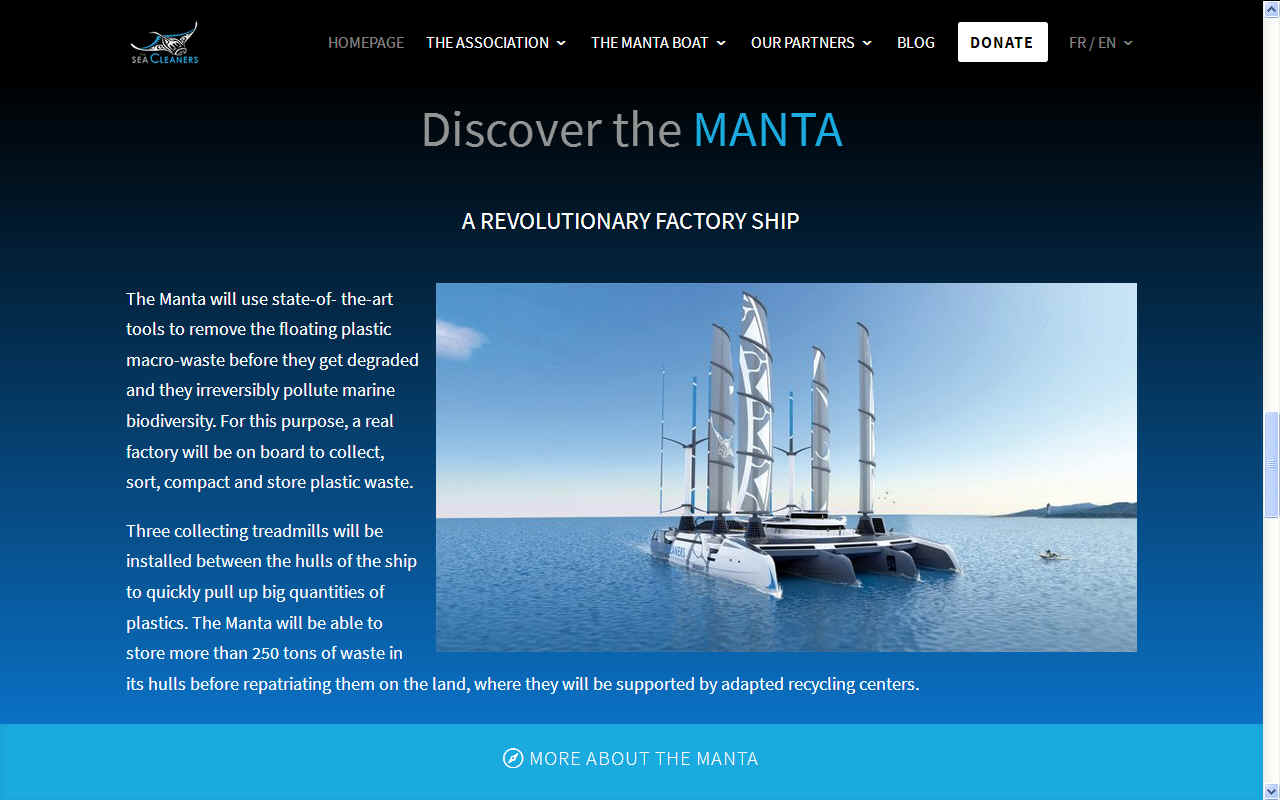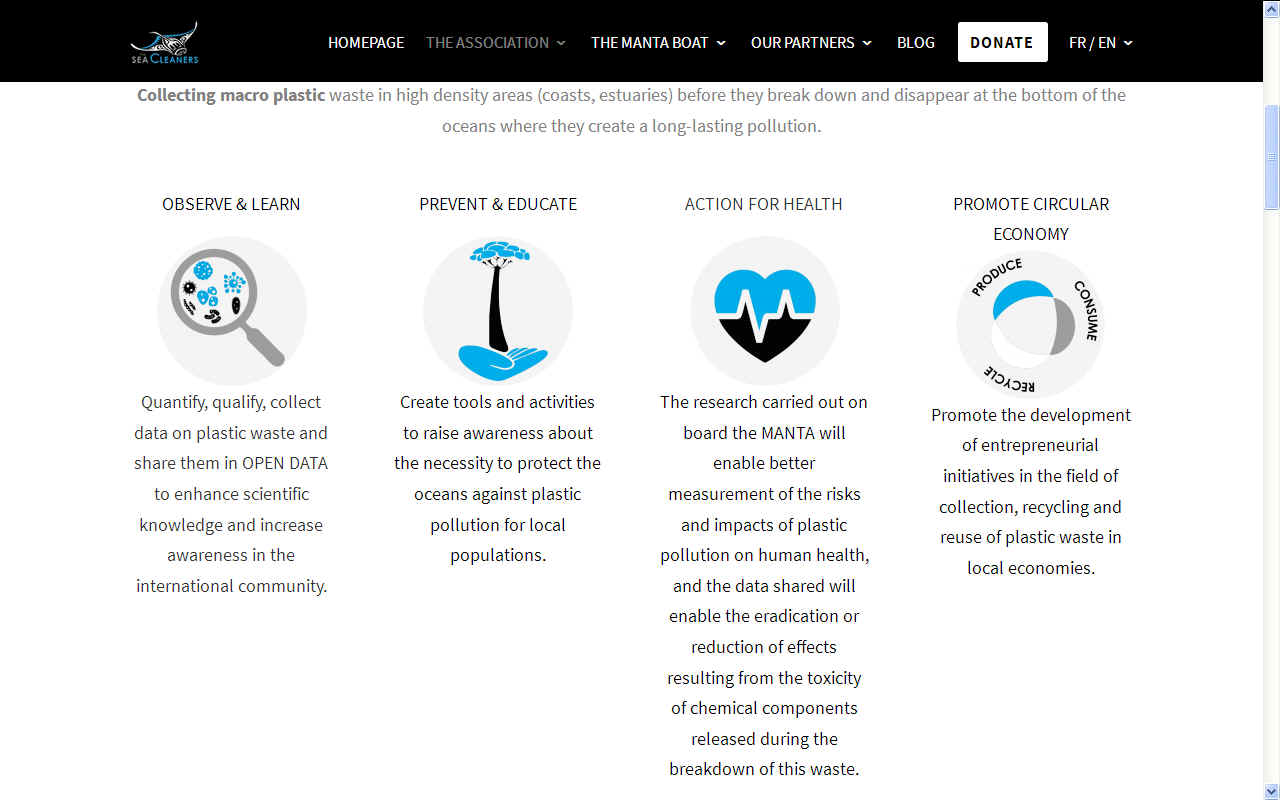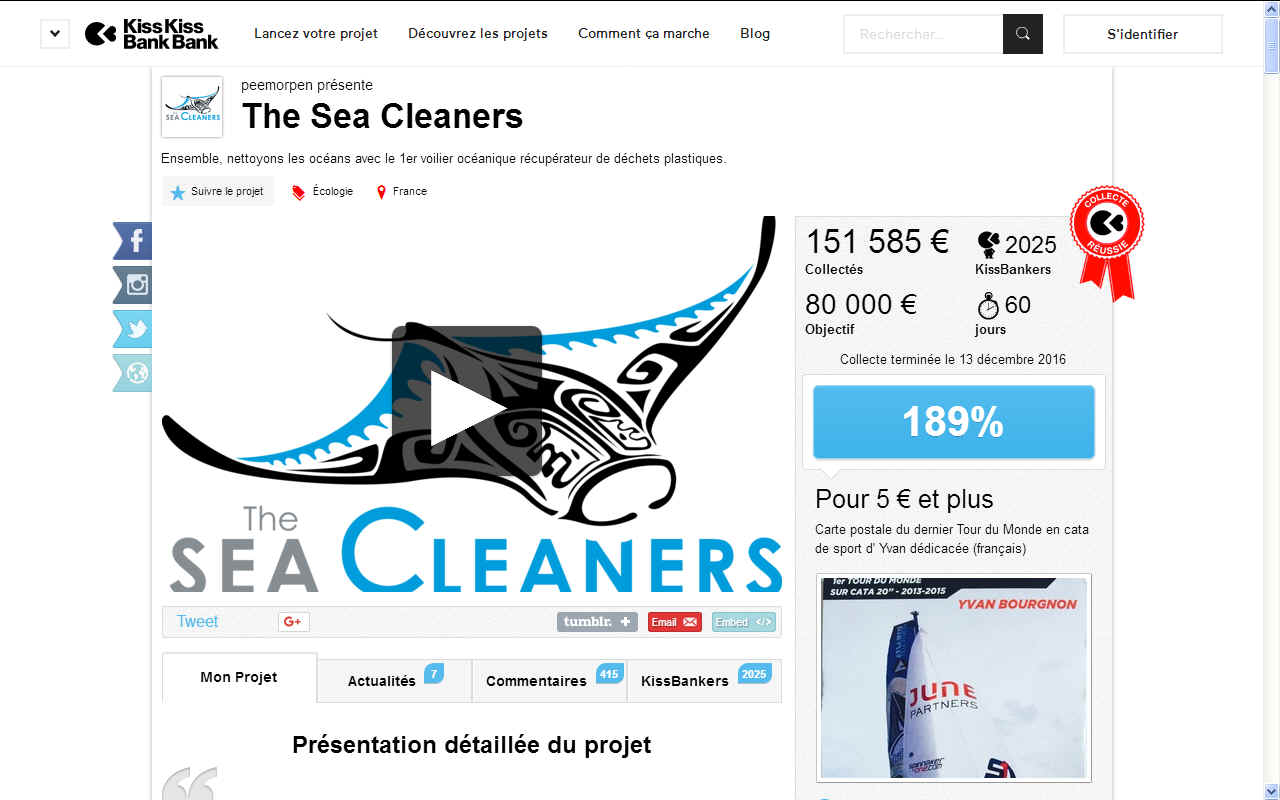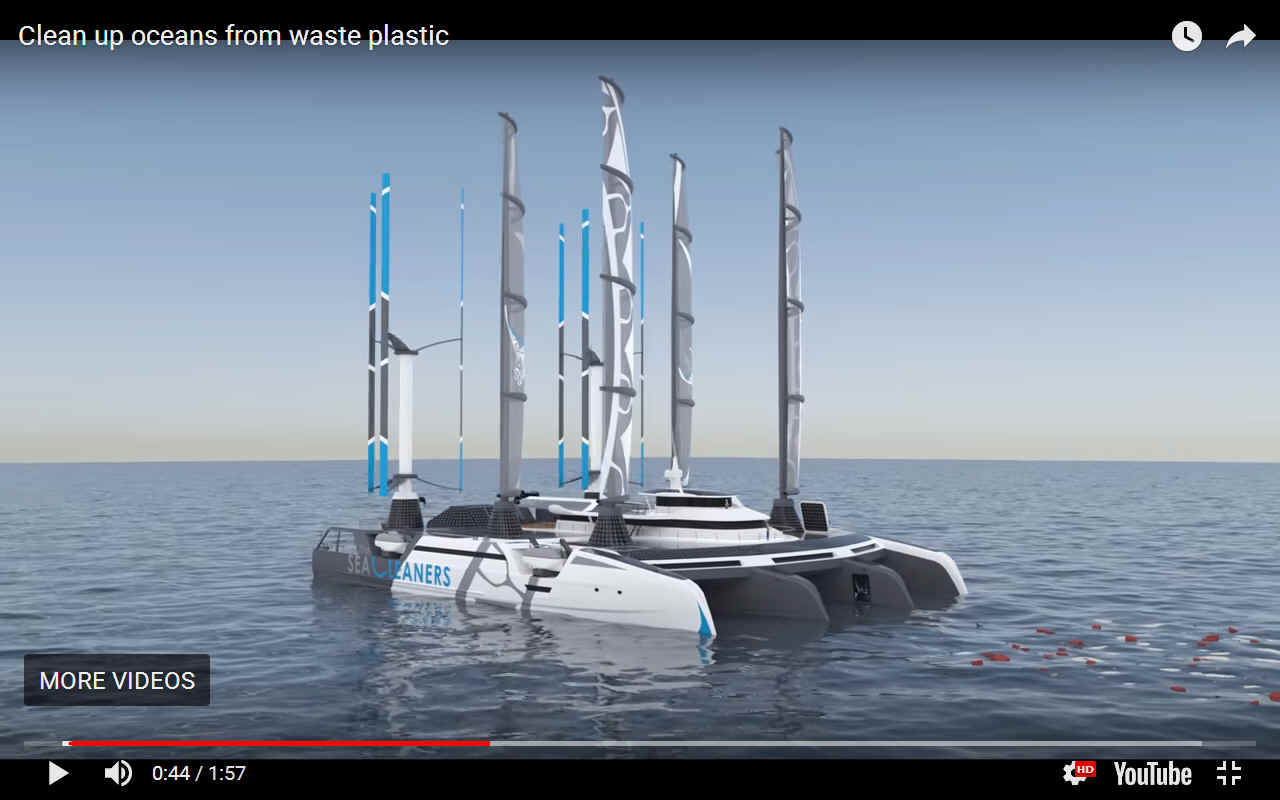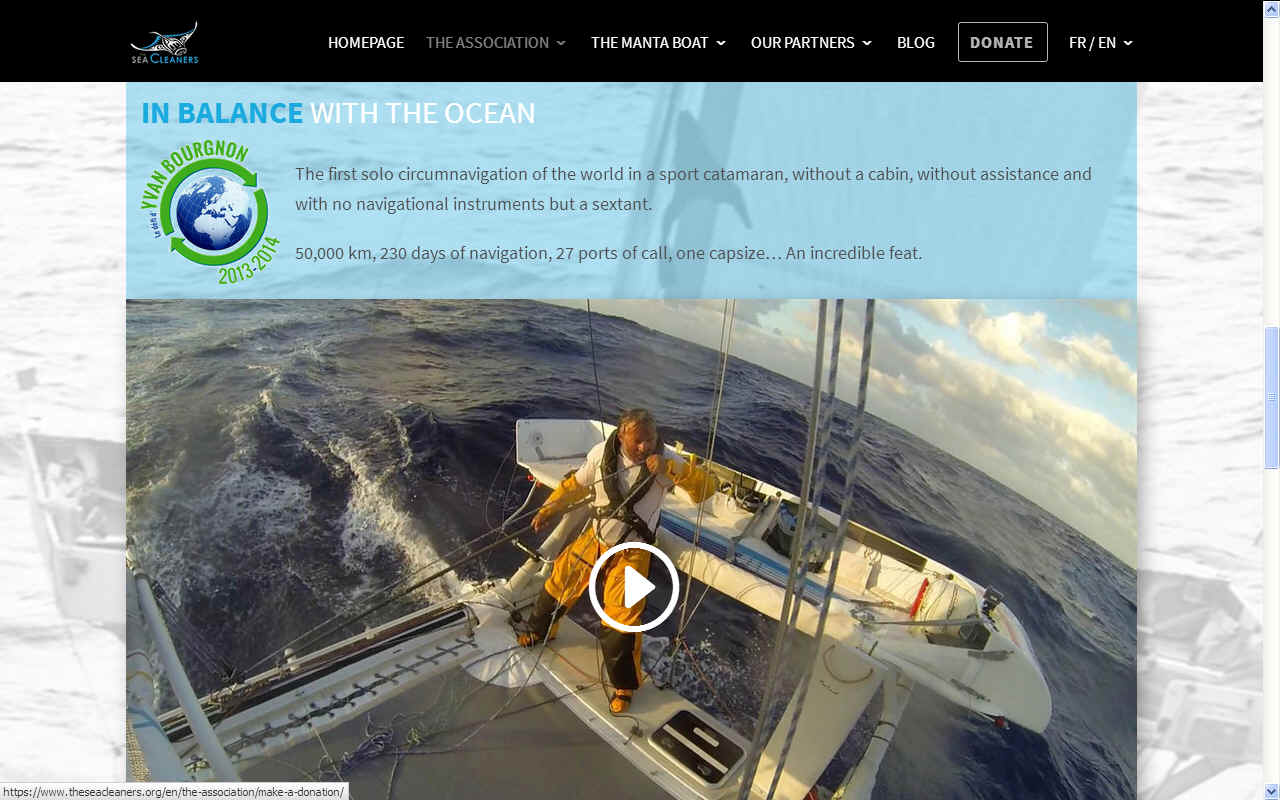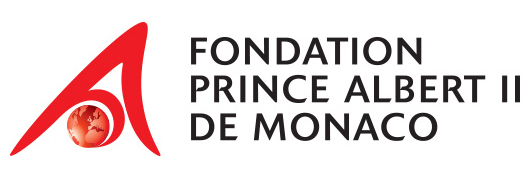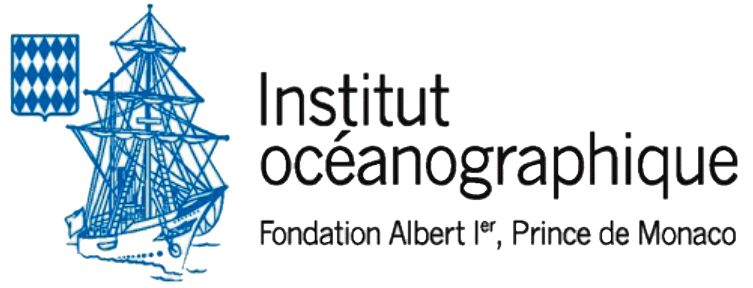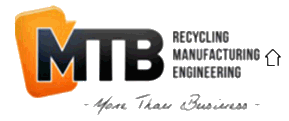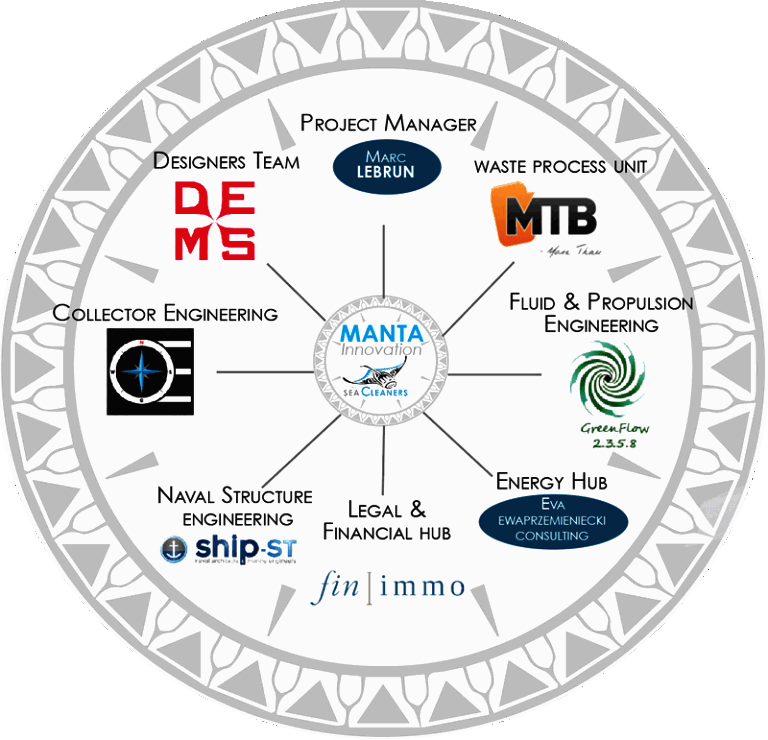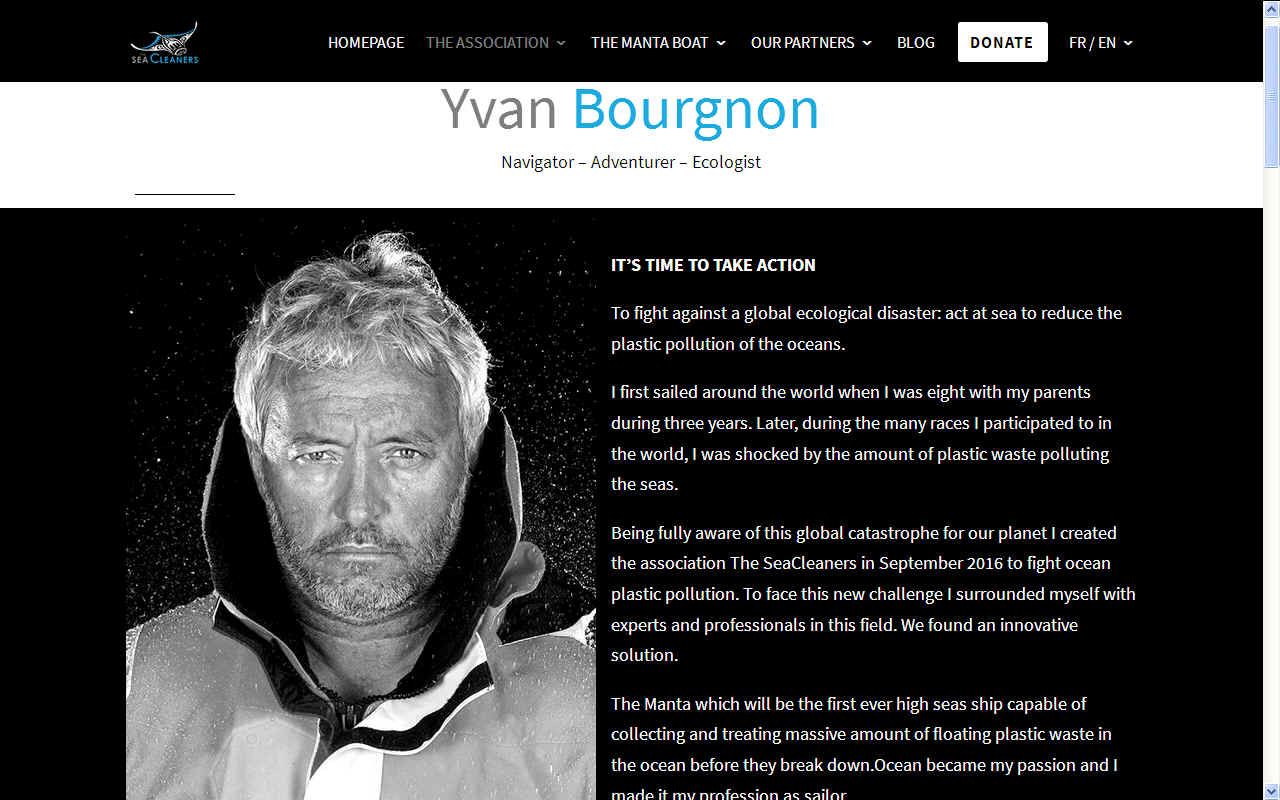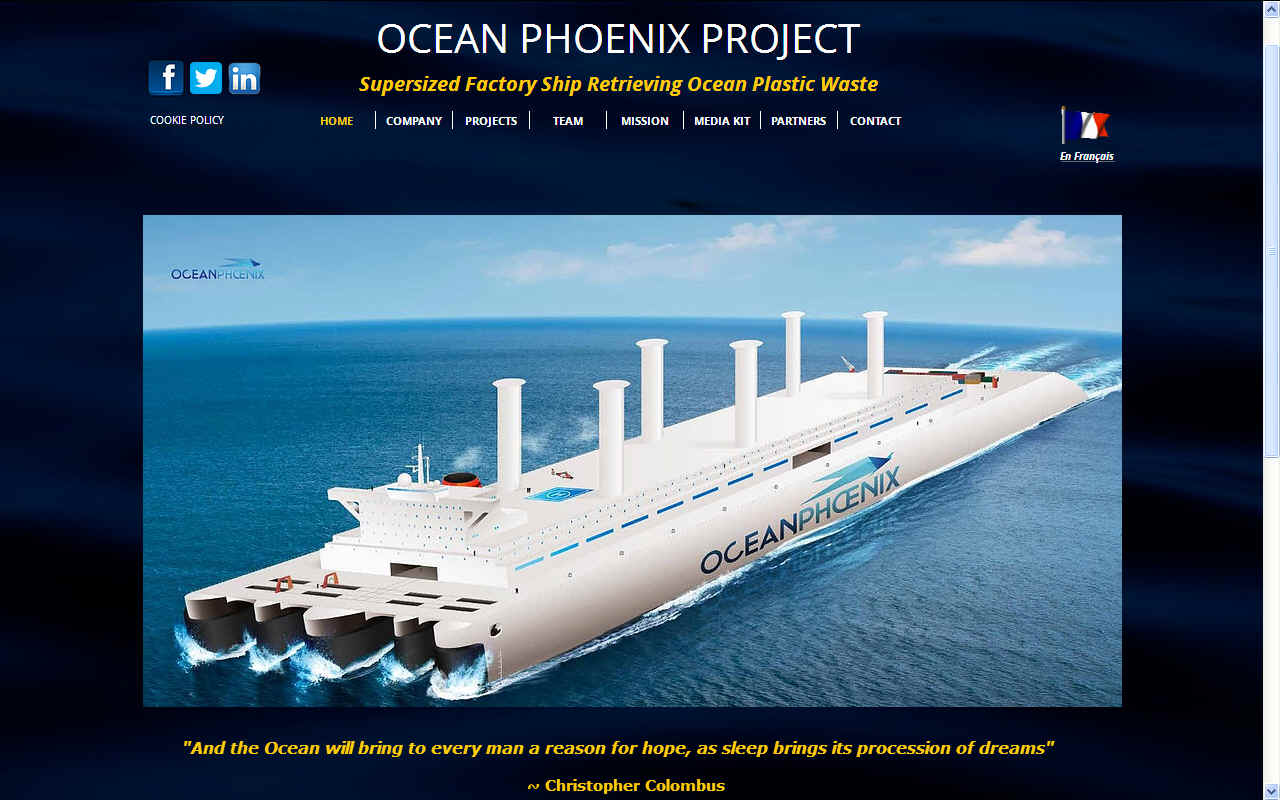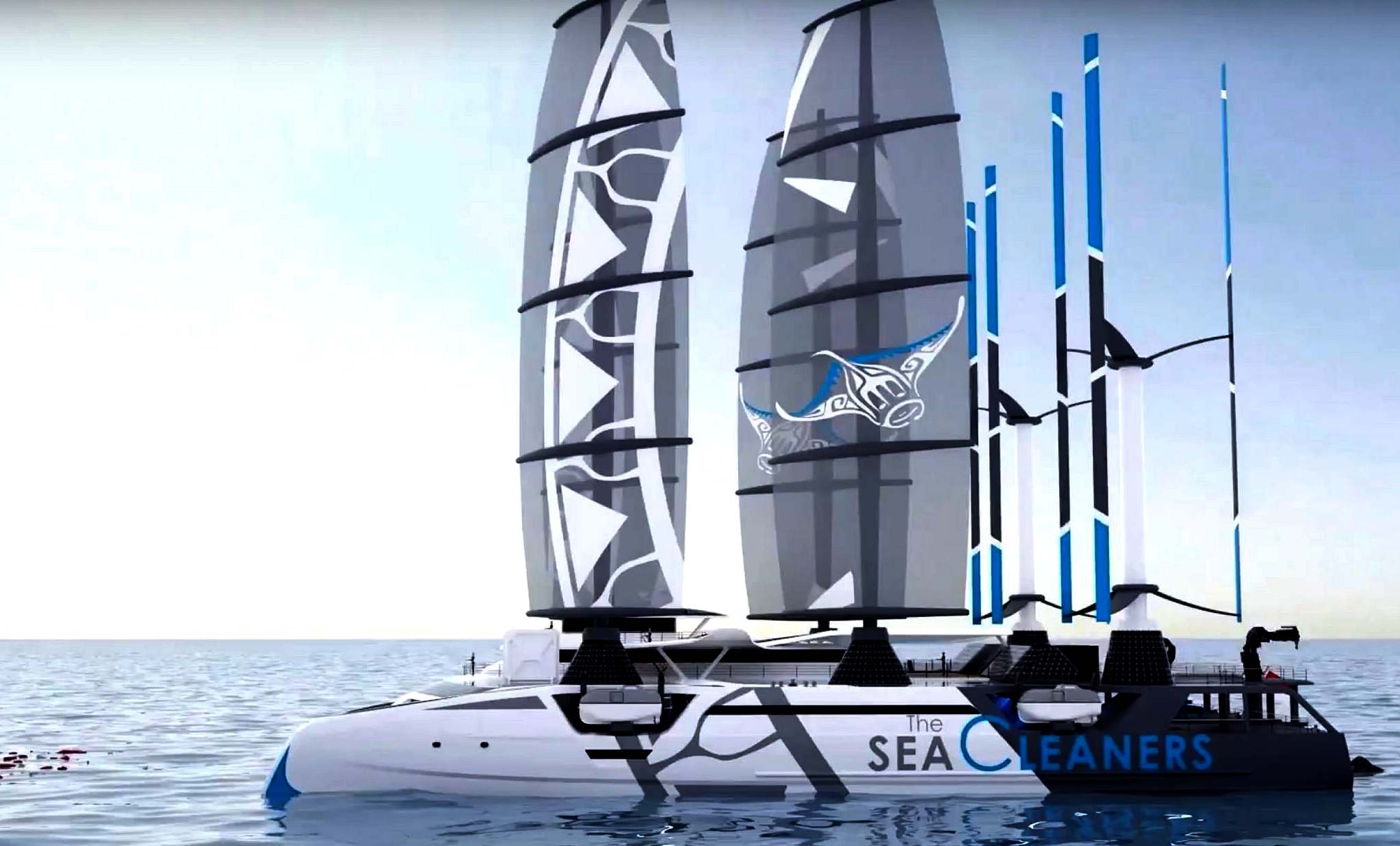|
MANTA SEA CLEANERS
ABOUT - CONTACTS - FOUNDATION - HOME - A-Z INDEX
MANTA: Is a multihull designed to carry three conveyor belts to lift macro plastic into an onboard processing facility. Power comes from four wing sails, two darrieus wind turbines and two thousand square meters of solar panels.
The Manta concept is a quad-maran, a four hulled vessel that uses energy harvested from nature to power onboard plastic processing equipment. The concept is not that far removed from the original SeaVax proof of concept boat, except that the Sea Cleaner's Manta cannot deal with micro plastics. Manta was the name earmarked for the first full size SeaVax in 2015, but as this French team appear to have absorbed that idea, the first SeaVax will be renamed - and to prevent anyone else piggy-backing, the name will not be released until nearer the time. We are all in this together and there's plenty of room out in the oceans for more than one design of plastic feeder and a little imitation, where the objectives rise above competitive squabbles. In the fight against ocean plastic we are all brothers.
The Manta concept will use state-of-the-art methods to remove the floating plastic macro-waste before it gets degraded and they irreversibly pollute marine biodiversity. The idea is to install a factory on the decks to collect, sort, compact and store up to 250 tons of plastic waste in 1m3 bales.
If
sufficient numbers are produced, these ships would complement SeaVax
water filters and Boyan
Slat's boom method of collecting macro plastic. The Manta
is not the first ship capable of dealing with large quantities
of ocean waste, but it is a contender. For example, SeaVax can
compact 50 tons of plastic
for offloading at sea onto a converted Panamax factory ship.
Where SeaVax is designed to operate in fleets, 5 units
provides a significantly larger mouth area. The Manta is 49
meters wide. Five SeaVax to give the same load carrying
capacity span 75 meters, at - we estimate - less cost. No
figures are provided on the Sea Cleaners website, something
they may want to attend to, to qualify the economics of
operations.
There appears to be no way of furling the darrieus rotors, leaving the vessel potentially vulnerable to capsize, though the design looks solid enough and the sails may be lowered, so the ship may well cope is tropical storms.
CROWDFUNDING
TECHNICAL SPECIFICATIONS
- 70 m long - 49 m wide - 61 m high - 2 Darrieus wind-turbines – producing 500 Kw/h - 2000 m² of solar panels – 200 Kw/h - 4 automated DynaRigs - 100 tonnes of batteries
THE TEAM
SUPPORTERS
HOW MANY SHIPS?
The Sea Cleaners have not yet said how many of their vessels should be deployed.
YVAN
BOURGNON: "I first sailed around the world when I was eight with my parents during three years. Later, during the many races I participated to in the world, I was shocked by the amount of plastic waste polluting the seas.
SEA CLEANERS CONTACTS
The SEA CLEANERS Email:
contact@theseacleaners.org
LINKS & REFERENCE
http://www.dems.fr/ https://www.mtb-recycling.fr/fr/accueil.html https://thecamp.fr/ http://www.fpa2.org/ http://www.institut-ocean.org/ https://www.theseacleaners.org/en/
OCEAN PHOENIX 360: Is a trimaran or triple hulled leviathan that eats diesel or LNG to seek and suck up plastic waste from our oceans. Serge Menard suggests that 40 of these giant tankers might clean up the oceans. This is a larger version of Yvan Bourgon's Manta sea cleaners, save that the smaller ship is solar, sail and wind turbine powered.
This website is provided on a free basis as a public information service. copyright © Cleaner Oceans Foundation Ltd (COFL) (Company No: 4674774) 2018. Solar Studios, BN271RF, United Kingdom. COFL is a charity without share capital. The names AmphiMax™, RiverVax™ and SeaVax™ are trade names used under license by COF in connection with their 'Feed The World' ocean cleaning sustainability campaign.
|
